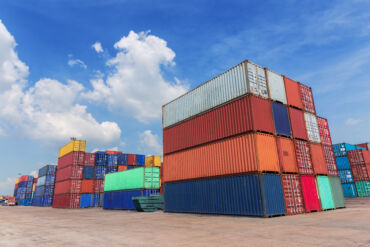As consumer preferences continue to increase for goods that are environmentally sustainable and socially responsible, prioritizing risks in the supply chain has evolved to focus on new and challenging areas of concern.
The concept of forced labor as a risk to global supply chains is not new; however, international efforts to combat forced labor have become more urgent in recent years. The International Labour Organization (ILO) Forced Labor Protocol, which entered into force in November 2016, as well as many individual and joint initiatives involving companies and non-governmental organizations (NGOs), emphasize the growing need for stronger actions to end or, at a minimum, remediate this and other modern forms of slavery.
According to the ILO Global Estimates of Modern Slavery: Forced Labour and Forced Marriage Report and ILO Global Estimates of Child Labour Report, the numbers certainly show cause for concern:
- At any given time in 2016, an estimated 40.3 million people were in modern slavery, including 24.9 million in forced labor.
- 1 in 4 victims of modern slavery are children.
- Out of the 24.9 million people trapped in forced labor, 16 million are exploited in the private sector such as domestic work, construction, or agriculture; 4.8 million persons in forced sexual exploitation; and 4 million persons in forced labor imposed by state authorities.
- Women and girls are disproportionately affected by forced labor, accounting for 99% of victims in the commercial sex industry and 58% in other sectors.
- Worldwide 218 million children between 5 and 17 years are in employment. Among them, 152 million are victims of child labor; almost half of them, 73 million, work in hazardous child labor. Almost half of all 152 million children victims of child labor are aged 5-11 years.
There are numerous reasons that companies should put controls and procedures in place to combat forced labor in their global supply chains – besides being a socially responsible company. The following is just a sample of why companies should take notice.
Regulatory requirements and actions regarding forced labor in the global supply chain
- U.S. Tariff Act of 1930 – The U.S. government prohibits the import into the US of goods “mined, produced, or manufactured wholly or in part” by convict, forced, or indentured labor.
- U.S. Trade Facilitation and Enforcement Act of 2015 (TFTEA)
- TFTEA eliminated the “consumptive demand” exception. Customs and Border Protection (CBP) Withhold Release Orders may be issued based on belief “that goods are being, or are likely to be, imported in violation of the Customs forced labor statute.”
- The Countering America’s Adversaries Through Sanctions Act (CAATSA – 2017)
- CAATSA reverses the burden of proof for imported merchandise believed to be the product of labor by North Korean citizens or nationals, wherever located.
- CBP can prohibit import “unless the importer can demonstrate by ‘clear and convincing evidence’ that North Korean forced labor was not involved in the production of the merchandise.”
- Proposed U.S. Legislation – Uyghur Human Rights Policy Act of 2020 S.3477 (5/14/2020)
- The Congressional-Executive Commission on China (“CECC”) targets supply chains linked to forced labor in the Xinjiang Uyghur Autonomous Region in China.
- S.3477 passed both the U.S. House and Senate on 5/27/2020 and will now be sent to the president. The bill includes numerous provisions including imposing sanctions and asset blocking, among other requirements.
- Additionally, other bills are under review including Uyghur Forced Labor Prevention Act which if enacted, “any U.S. imports which originated to any degree in Xinjiang, China, or which were produced by Chinese suppliers that have participated in a labor pairing program offering subsidized employment opportunities for participants in the re-education through labor program, will be presumptively subject to denial of entry into the United States.‘’
- U.S Executive Order on the Establishment of the Forced Labor Enforcement Task Force Under Section 741 of USMCA (5/15/2020)
- The California Transparency in Supply Chains Act (2010)
- This requires certain companies to report on their efforts to combat slavery and human trafficking in their supply chains, which is an indication of how this focus is making its way to the U.S. state level.
- Netherlands – Child Labor Due Diligence Law (5/14/2019)
- Mandatory due diligence requirements
- Great Britain – U.K. Modern Slavery Act (2015)
- Modeled in part on the California law
- Other countries that have implemented laws in recent years include France and Australia. Canada, Finland, and Germany have pending regulations as well.
Forced labor risk and cost of noncompliance
- On January 31, 2019, the U.S. Office of Foreign Assets Control (OFAC) issued its first fine for violating CAATSA as it applies to North Korean labor under the North Korean Sanctions Regulations (NKSR) to e.l.f. Cosmetics. The initial statutory maximum civil monetary penalty amount for the apparent violations was US$40,833,633. This enforcement action indicates that government agencies are watching closely for violations of this nature. Note: e.l.f. Cosmetics was able to reduce the penalty to $996,080 as the result of an immediate prior disclosure, as well as having no prior history of violations in the previous 5 years, among other factors.
- In December 2019, Apple, Google, Microsoft, Tesla, and Dell were all named as defendants in a federal lawsuit about child labor, injury, and death of children in cobalt mines in the Democratic Republic of the Congo (DRC). Cobalt is a key part of lithium batteries used by the companies’ products, and the majority of it is within the DRC.
- In March 2020, Australian Strategic Policy Institute published a detailed report documenting the use of Uyghurs forced labor in the Xinjiang region of China (see above for pending U.S. legislation). This report is drawing the attention of lawmakers and customs agencies globally from an enforcement standpoint. Numerous large global companies were named in the document.
- In an interview with International Trade Today, U.S. CBP Executive Assistant Commissioner Smith stated that the agency is planning to start issuing more monetary penalties related to forced labor: “As we’ve really revamped our approach to enforcing or using our forced labor authority, there are several things that we either want to fix or things we want to amplify,” she said. “I absolutely think that penalties is one of those things.”
Forced labor in supply chains during COVID-19
Forced labor is not immune from COVID-19 either. Delta 8.7, an innovative project created by the United Nations University Centre for Policy Research, recently pushed an article titled “The Impact of COVID-19 on Modern Slavery,” in which they discuss how the pandemic has actually increased the potential risk in this area in a number of ways:
- Heightening risks for those already exploited
- Increasing the risks of exploitation, including child labor
- Disrupting response efforts
During this time, employers will have stronger incentives and perhaps greater latitude for exploitation. For example, in order to meet demand for hand sanitizer and masks, countries including the U.S. have turned to prison labor as a means of production – a population at heightened risk of labor exploitation.
Countries may also be tempted to relax import restrictions on goods in critical supply chains, such as for medical equipment, placing workers at heightened risk. Recently U.S. CBP revoked on 3/24/2020 a hold on the import of disposable rubber gloves from a supplier in Malaysia suspected of using forced labor.
With all of this in mind, the primary incentives for companies to conduct due diligence still come down to reputational risks and both investors and consumers requiring a high standard.
This is all very concerning – so what is being done to address the risk of forced labor?
Government agencies, global traders, and NGOs are certainly elevating the issue and, in many industry segments, are working collaboratively to not only educate those affected but also work toward finding specific solutions and best practices.
The Commercial Operations Advisory Committee (COAC), which advises the U.S. Secretaries of the Treasury and DHS on all matters involving the commercial operations of CBP, has active subcommittees and working groups partnering to address forced labor issues such as identifying industry best practices and standards, developing methodology for ways the industry can take a collaborative approach to combat forced labor practices, improve supply chain traceability, and develop reasonable guidelines for voluntary disclosures.
However, the challenges are real. Supply chains of global companies often have tens of thousands of suppliers across multiple tiers. Companies often only have direct contractual relationships with first tier suppliers, and very limited or no visibility of the supply chain beyond that. Tier-1 suppliers may be protective of information with respect to their further supply chain. Additionally, leverage over suppliers differs greatly depending on the size of the company, the size of the suppliers, and the nature of the relationship. This same challenge exists for other areas of risk as well, such as Conflict Minerals.
Cost implications that are associated with due diligence can also prevent many companies from taking the necessary steps to identify and address forced labor in their supply chains. However, there are actions companies can take to move in the right direction, including:
- Incorporation of contractual provisions and supply chain codes of conduct (where direct contractual relationships exist)
- Conducting human rights audits
- Use of human rights experts as auditors and investigators
- Proper training of employees
- Reduction of complex supply chains, which make transparency to issues challenging
- Automated solutions to conduct due diligence and provide regional/country specific risk data
- Leverage industry associations, government agencies, and NGOs that have robust tools and guidelines to assist in the due diligence process (e.g., Department of Labor Comply Chain)
- Divestment in the high-risk supplier
All of this underscores the importance of integrating an automated supplier risk management solution into your supply chain management strategy. In an unforgiving global market, it has become increasingly important to conduct due diligence when sourcing goods and materials, no matter the region.
Implementing a solid strategy not only demonstrates due diligence but also helps your company to avoid fines, penalties, and possible damages to the brand. In light of recent events, now is an ideal time to have a conversation with your stakeholders to consider implementing automated solutions to assess and mitigate risk.
Learn more about ONESOURCE Supply Chain Compliance, ONESOURCE Denied Party Screening, and our other risk assessment management solutions.









